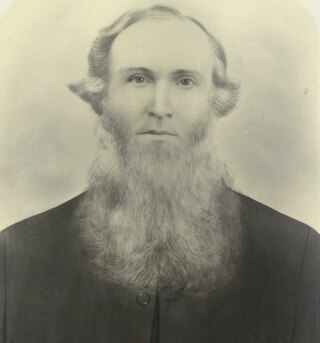Nationality words link to articles with information on the nation's poetry or literature.

Charles Harpur was an Australian poet and playwright. He is regarded as "Australia's most important nineteenth-century poet."
Nationality words link to articles with information on the nation's poetry or literature.
Nationality words link to articles with information on the nation's poetry or literature.
Nationality words link to articles with information on the nation's poetry or literature.
-- first stanza of Julia Ward Howe's Battle Hymn of the Republic conceived as both poem and lyrics to a popular tune and first published in February in The Atlantic Monthly
"Bell-Birds" is a poem by Australian writer Henry Kendall that was first published in The Sydney Morning Herald on 25 November 1867.
A Mid-Summer Noon in the Australian Forest is a poem by Australian poet Charles Harpur. It was first published in The Empire magazine on 27 May 1851, and later in the poet's collection titled Poems (1883).
The Women of the West is a poem by Australian poet George Essex Evans. It was first published in The Argus newspaper on 7 September 1901, and later in the poet's poetry collection The Secret Key and Other Verses (1906).
"The Last of His Tribe" is a poem by Australian writer Henry Kendall that was first published in The Sydney Morning Herald on 27 September 1864, under the title "Woonoona: The Last of His Tribe".
This article presents a list of the historical events and publications of Australian literature during 1883.
"The Song of Ninian Melville" is a poem by Australian writer Henry Kendall that was first published in the author's suppressed edition of his poetry collection, Songs from the Mountains in 1880. The poem is a set of verses satirising Ninian Melville, at that time Member for Northumberland in the Parliament of New South Wales. Immediately after publication the publisher, believing the political satire to be possibly libellous, recalled the edition after some 250 copies had been distributed. The satire was excised and replaced by the poem "Christmas Creek". The book was re-published in January 1881.
The Bushrangers, a Play in Five Acts, and Other Poems (1853) was the third collection of poems by Australian poet Charles Harpur. It was released in hardback by W. R. Piddington in 1853. It features the poet's second play as well as some of his major works, including "The Creek of the Four Graves", "To an Echo on the Banks of the Hunter" and "Lines Suggested by the Appearance of a Comet".
"A Death in the Bush" (1868) is a long narrative poem by Australian poet Henry Kendall. It was originally published in the 1868 edition of Williams's Illustrated Australian Annual, and later appeared in the author's collection Leaves from Australian Forests (1869).
Harry Dashboard, pen-name of the Australian newspaper poet identified as James Riley, who also wrote under other pseudonyms including “Felix.”
The Tragedy of Donohoe is a play by Charles Harpur.
"A Storm in the Mountains" (1856) is a poem by Australian poet Charles Harpur.
"A Coast View" (1857) is a poem by Australian poet Charles Harpur, also known by the title "Coast Scenery".
"The Beautiful Squatter" (1845) is a poem by Australian poet Charles Harpur.
